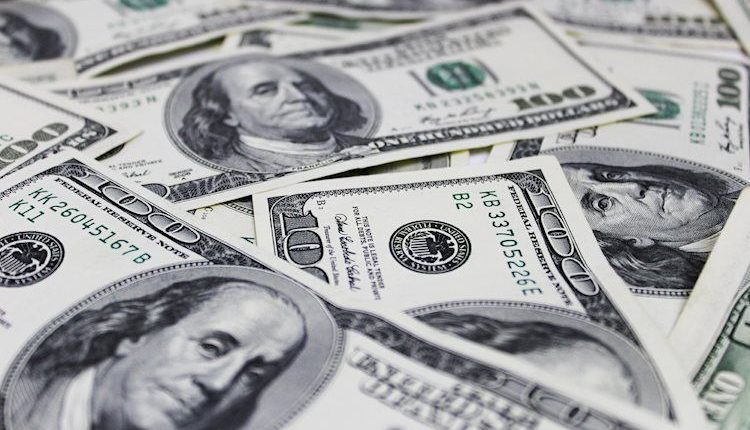Here is what you need to know on Friday, November 29:
The US Dollar (USD) stays under selling pressure on Friday, with the USD Index dropping to its weakest level in over two weeks below 106.00. The US economic calendar will not feature any high-tier data releases and financial markets in the US will close early. Harmonized Index of Consumer Price (HICP) data from the Eurozone and third-quarter Gross Domestic Product (GDP) data from Canada will be watched closely by investors.
Following the Thanksgiving Day holiday, US stock index futures gain traction early Friday and the benchmark 10-year US Treasury bond yield continues to push lower toward 4.2%, making it difficult for the USD to find demand.
US Dollar PRICE This week
The table below shows the percentage change of US Dollar (USD) against listed major currencies this week. US Dollar was the weakest against the Japanese Yen.
| USD | EUR | GBP | JPY | CAD | AUD | NZD | CHF | |
|---|---|---|---|---|---|---|---|---|
| USD | -1.49% | -1.49% | -2.61% | 0.20% | -0.23% | -1.07% | -1.21% | |
| EUR | 1.49% | -0.17% | -1.75% | 1.11% | 1.19% | -0.15% | -0.32% | |
| GBP | 1.49% | 0.17% | -1.58% | 1.28% | 1.37% | 0.02% | -0.15% | |
| JPY | 2.61% | 1.75% | 1.58% | 2.90% | 2.89% | 1.66% | 1.62% | |
| CAD | -0.20% | -1.11% | -1.28% | -2.90% | -0.28% | -1.25% | -1.45% | |
| AUD | 0.23% | -1.19% | -1.37% | -2.89% | 0.28% | -1.33% | -1.49% | |
| NZD | 1.07% | 0.15% | -0.02% | -1.66% | 1.25% | 1.33% | -0.17% | |
| CHF | 1.21% | 0.32% | 0.15% | -1.62% | 1.45% | 1.49% | 0.17% |
The heat map shows percentage changes of major currencies against each other. The base currency is picked from the left column, while the quote currency is picked from the top row. For example, if you pick the US Dollar from the left column and move along the horizontal line to the Japanese Yen, the percentage change displayed in the box will represent USD (base)/JPY (quote).
During the Asian trading hours, the data from Japan showed that the Tokyo Consumer Price Index rose by 2.6% on a yearly basis in November, up sharply from the 1.8% increase recorded in October. Other data revealed that the Unemployment Rate edged higher to 2.5% in October from 2.4% and the annual Industrial Production contracted by 2.6%. After posting small gains on Thursday, USD/JPY turned south early Friday and was last seen trading at its lowest level since late October near 150.00, losing about 1% on the day.
Following Thursday’s indecisive action, EUR/USD benefits from the renewed USD weakness and rises toward 1.0600 in the European morning on Friday. The data from Germany showed on Thursday that the Consumer Price Index (CPI) declined by 0.2% on a monthly basis in November’s flash estimate, matching the market expectation.
GBP/USD gains traction in the European morning and trades in positive territory above 1.2700. The pair remains on track to snap an eight-week losing streak.
Canada’s GDP is forecast to expand at an annual rate of 1% in the third quarter after growing 2.1% in the second quarter. Following the upsurge seen earlier in the week, USD/CAD closed the previous two days in negative territory. The pair extends its slide early Friday and trades below 1.4000.
Gold gathers bullish momentum amid retreating US T-bond yields and trades above $2,660 in the European morning on Friday, rising about 1% on the day.
Inflation FAQs
Inflation measures the rise in the price of a representative basket of goods and services. Headline inflation is usually expressed as a percentage change on a month-on-month (MoM) and year-on-year (YoY) basis. Core inflation excludes more volatile elements such as food and fuel which can fluctuate because of geopolitical and seasonal factors. Core inflation is the figure economists focus on and is the level targeted by central banks, which are mandated to keep inflation at a manageable level, usually around 2%.
The Consumer Price Index (CPI) measures the change in prices of a basket of goods and services over a period of time. It is usually expressed as a percentage change on a month-on-month (MoM) and year-on-year (YoY) basis. Core CPI is the figure targeted by central banks as it excludes volatile food and fuel inputs. When Core CPI rises above 2% it usually results in higher interest rates and vice versa when it falls below 2%. Since higher interest rates are positive for a currency, higher inflation usually results in a stronger currency. The opposite is true when inflation falls.
Although it may seem counter-intuitive, high inflation in a country pushes up the value of its currency and vice versa for lower inflation. This is because the central bank will normally raise interest rates to combat the higher inflation, which attract more global capital inflows from investors looking for a lucrative place to park their money.
Formerly, Gold was the asset investors turned to in times of high inflation because it preserved its value, and whilst investors will often still buy Gold for its safe-haven properties in times of extreme market turmoil, this is not the case most of the time. This is because when inflation is high, central banks will put up interest rates to combat it. Higher interest rates are negative for Gold because they increase the opportunity-cost of holding Gold vis-a-vis an interest-bearing asset or placing the money in a cash deposit account. On the flipside, lower inflation tends to be positive for Gold as it brings interest rates down, making the bright metal a more viable investment alternative.
Read the full article here

